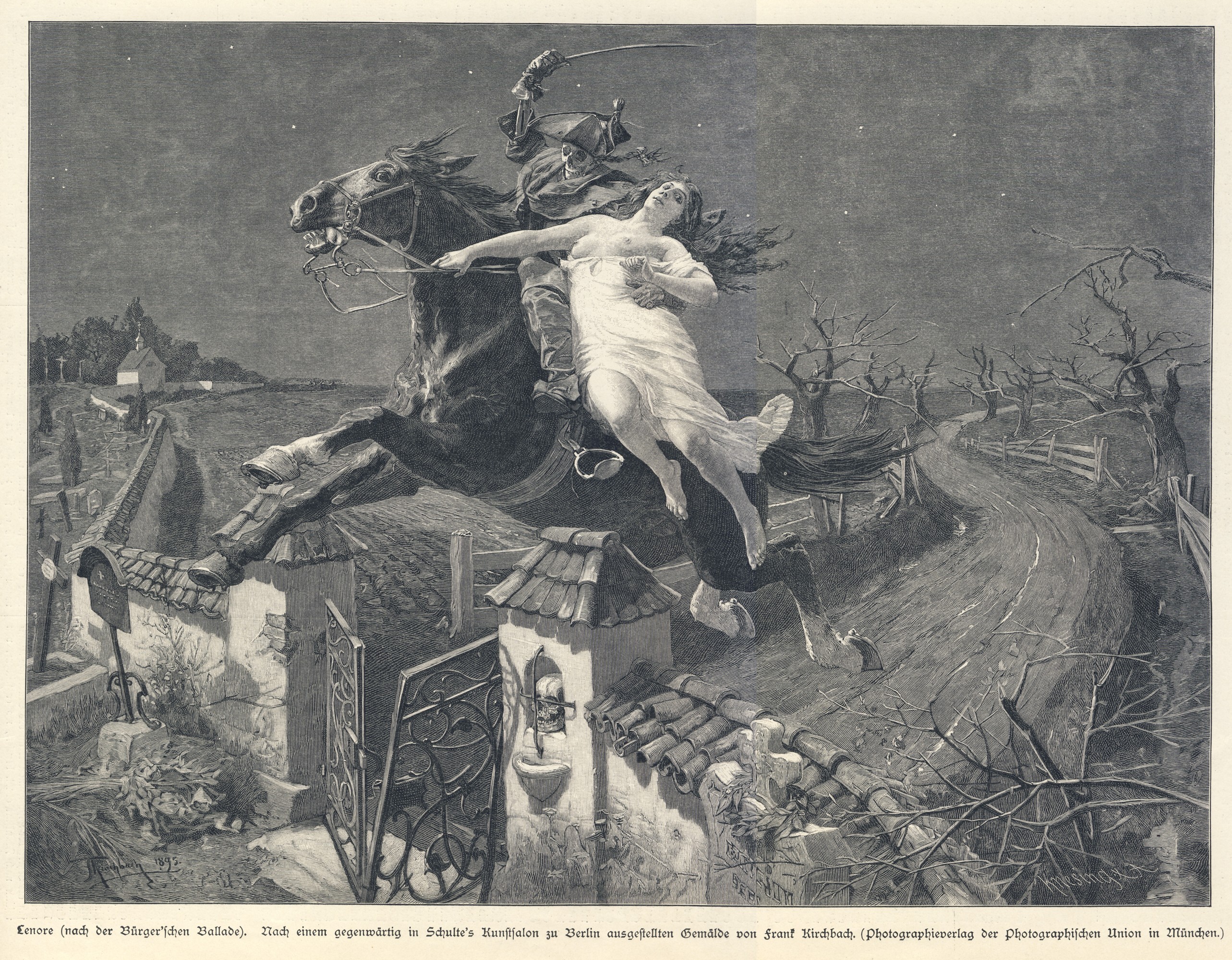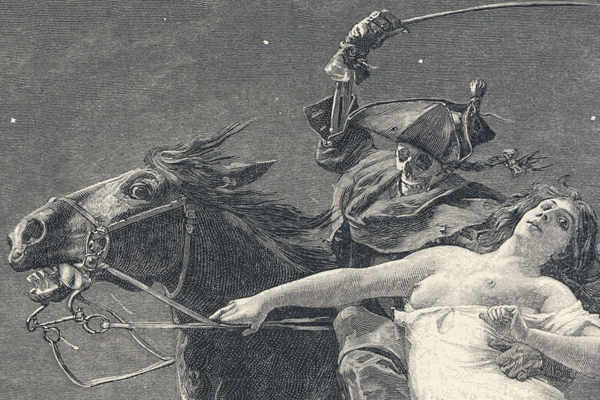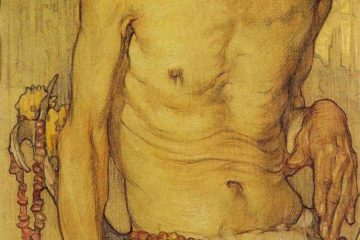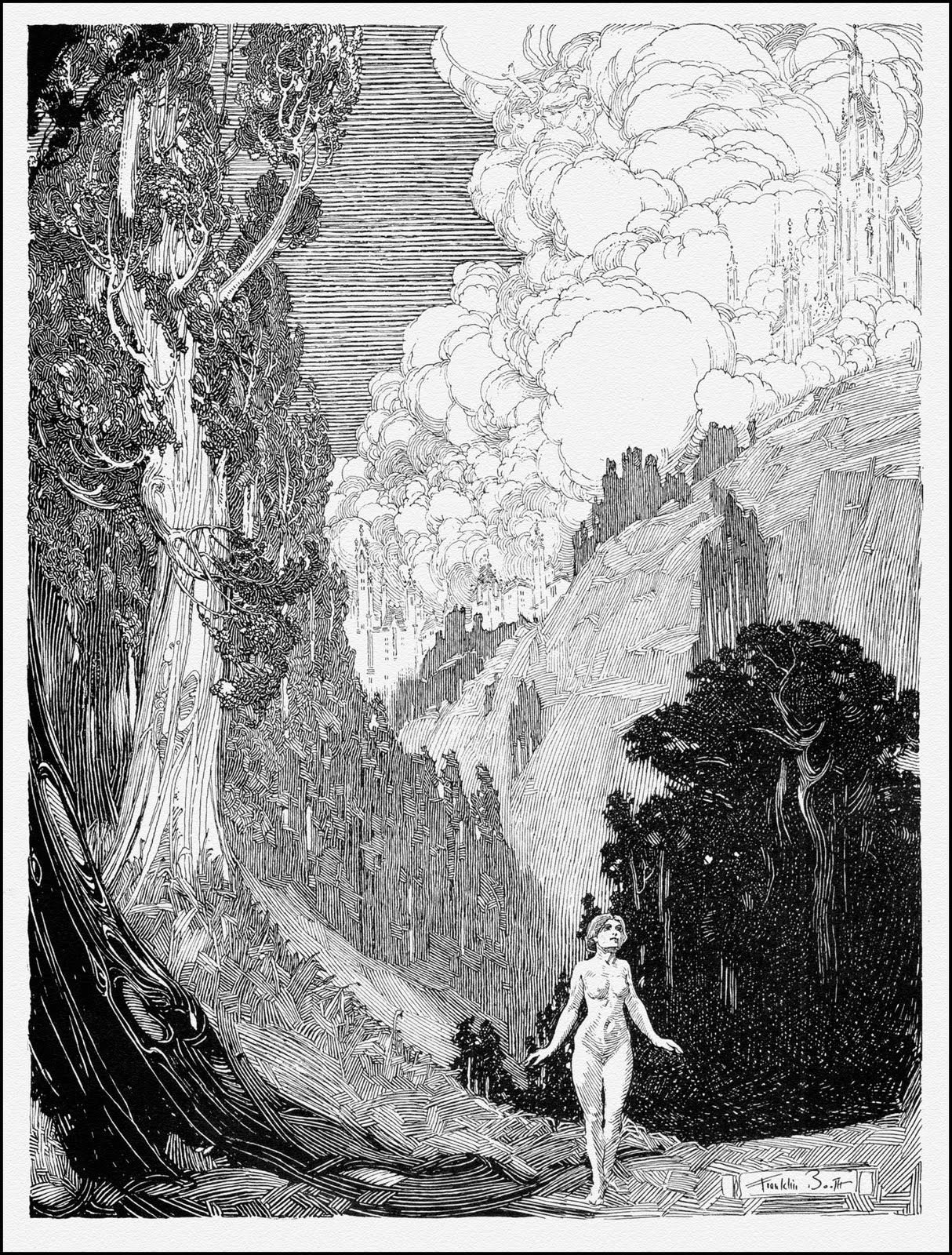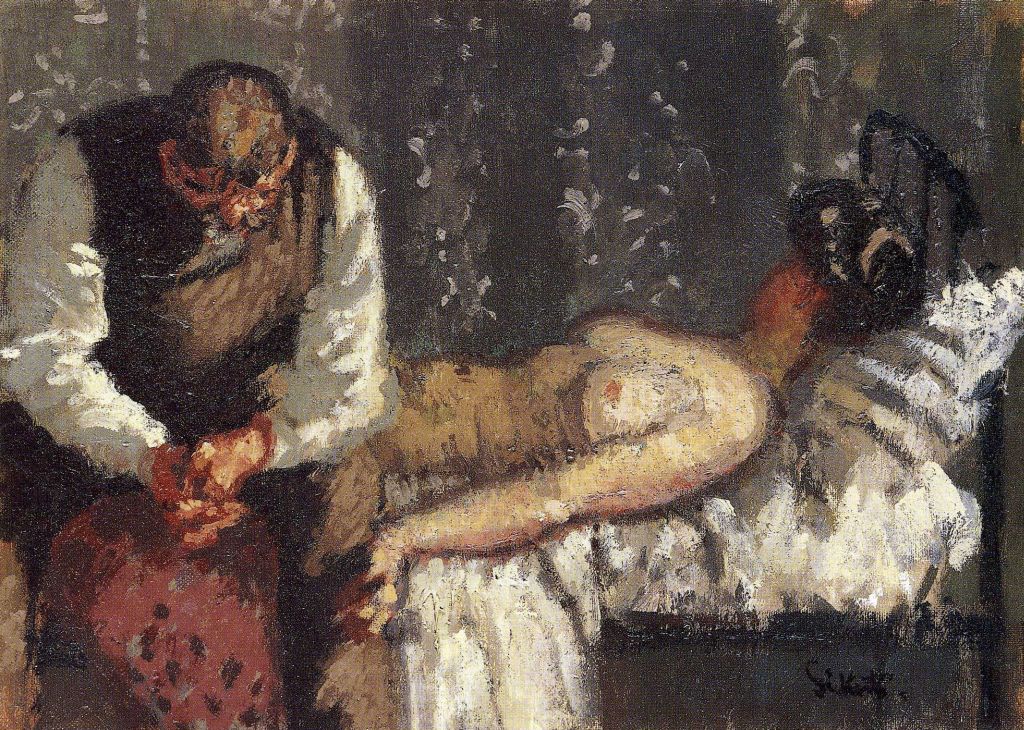So, let’s get this out of the way first. I haven’t had a chance to read the story that inspired this illustration yet, but a story about death carrying off a dead soldier’s beloved is right up my alley. Having been an inspiration for Poe, vampire stories, and all manner of 18th and 19th century horror, I’ll be checking out the story as soon as I can.
Kirchbach’s illustration for “Lenore” is a perfect vision of what I think of when I hear the word “gothic.” There is a certain sense of how the art is portrayed, and the topics at hand, and in this case it bridges the styles of the 18th and 19th centuries. It is more detailed, there’s more action, and at the same time, like many things I consider gothic, a sense that things are close to, but not quite, real.
That combination of reality and fantasy, mixed with the horror of the moment, is what entices me. The wild sense of fantasy is apparent as the horse and rider(s) fly well above the gate, yet the road still grounds them to a reality. We are at the moment where the horse, rider, woman, and the viewer are all leaving reality and heading into the darkness.
Heading into that darkness is the determined rider, despite both the horse and the woman looking toward the viewer as if distracted. They both seem to wonder if this is all really happening, and it is even more apparent in a close up of the action:
Death is on a mission here, and there’s nothing that will stop him from putting Lenore in her place. Kirchbach chose the moment in the story that perfectly sits between reality and fantasy, and packs a wallop for the viewer. Lenore might have been riding with her love a moment ago, and Death may turn into the grim reaper in just another second. At this moment, however, we’re in mid-turn, locked in the action and realizing that our reality just left us.
Toying with reality and fantasy like that can be very tricky, and Kirchbach hits the tone perfectly. Too far into reality and it’s just a horse hopping a fence. Too far into fantasy and it would be more difficult for the viewer to see that twist away from reality. Instead of being left with a phantom in the night, Kirchbach gave us both senses to work with.
Reality lives with the road, the graveyard, and a vision of reality that we would all be familiar with. A jumping horse isn’t unusual, but Kirchbach put that horse just a little too high in the air to fit into reality. What really makes the difference is Death as the rider, and as the viewer’s eye rises from the horse and Lenore we’re pulled into the fantasy and horror. The trick and the emotion work because Kirchbach used reality as the set piece, and twisted it just enough to put the viewer right into the horror alongside Lenore.
So remember kids, if you’re going to bad mouth the heavens, expect a visit from something dark and ominous very soon to carry you away.
“Look forth! look forth! the moon shines bright:
We and the dead gallop fast thro’ the night.”
References
See previous editions and subscribe to new articles here.
Zoom in on the larger version
See many different versions of Lenore Art
Illustration by Frank Kirchbach (1859-1912)
“Lenore” by G.A. Bürger.
Engraved by Theodore Knesing (1840-1925)
About the story: Wikipedia, Essay
The full text
